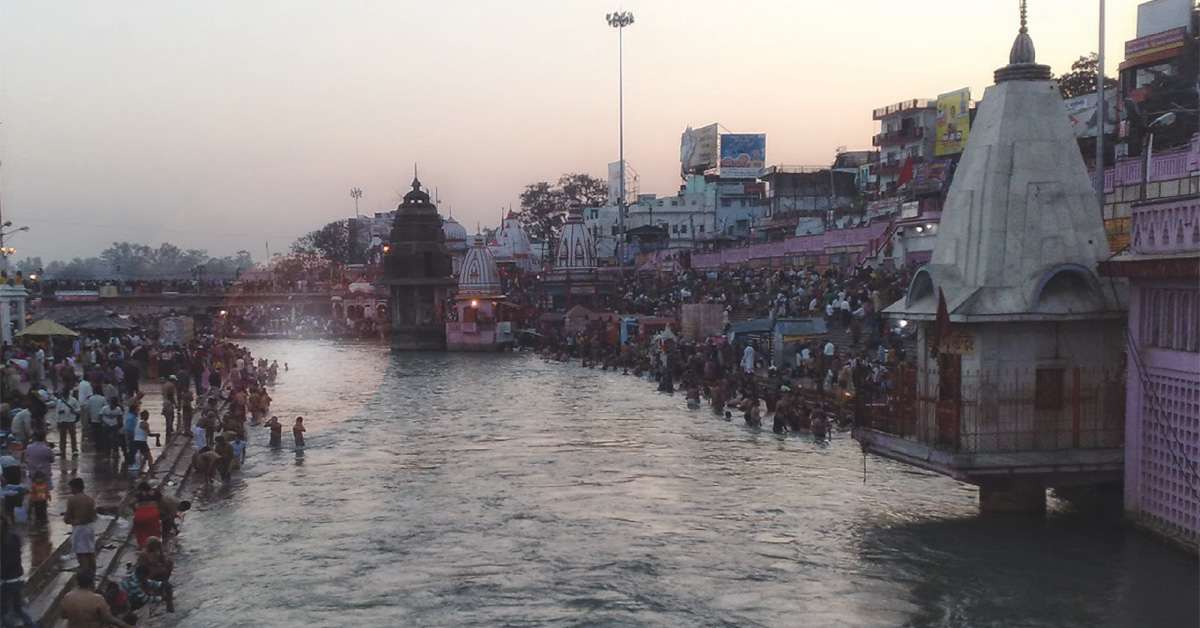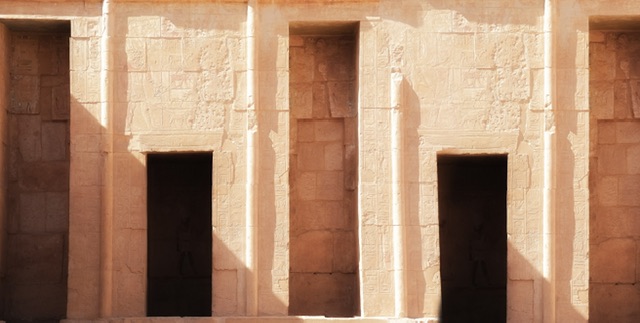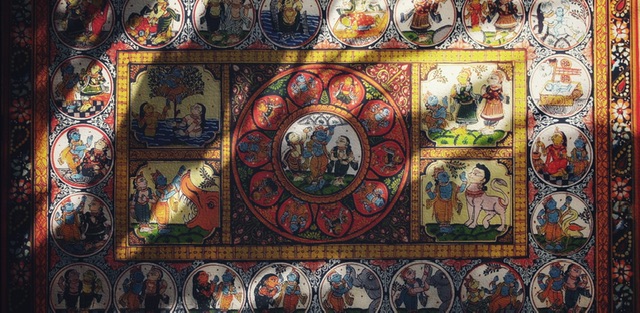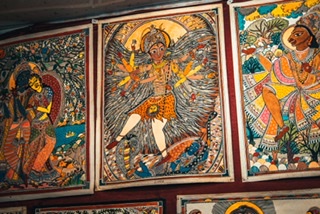Ganga has been called as the tirath of kaliyug. This tirath is fast receding. It is said that once Ganga retreats completely, kaliyug will end a few years after that. In this series of articles, we will attempt to trace the epic journey of Ganga, from Gomukh to Gangasagar. Har Har Gange!
Haridwar is the historic site where Ganga enters the plains having made its way through the Himalayas. Known as Haridwar, Hardwar and Gangadwar, this is a dwar (gateway) to the magnanimous miracle that is Ganga. The name Haridwar, or the Gateway to Hari (Lord Vishnu), sets it as the starting point for the pilgrimage to Badrinath. The name Haridwar, or Gateway to Har (Lord Shiv), makes it the entrance point for journey to Mount Kailash, abode of Shiv and also Kedarnath, the northernmost Shivling. Garud Purana lists it among the seven holiest places (sapt puri). It is also the site of the legendary Kumbh Mela, as it is believed that the place was nourished by Amrit (celestial nectar) which fell from the pitcher (Kumbh) as Garud carried it. Haridwar also assumes the pivotal place in the Kanwar yatra undertaken by devotees of Shiv in the month of Shravan. Let us explore this mystical town decorated with tales and legends from time immemorial…
Har ki Pauri: Literally translating as the ‘steps of Lord Shiv’, Har ki Pauri is the famous ghat of Haridwar housing the Brahma Kund, the spot where amrit fell. It is said Lord Vishnu and Lord Shiv both set their foot in the region. There is a large footprint on a stone wall, which is said to belong to Lord Vishnu, which is touched by Ganga at all times. Situated at a distance of about 1 km from Har Ki Pauri, the Bhimgoda Tank marks the spot from where Prince Bheem drew water from the rocks by thrusting his knee (goda) to the ground, in the journey of Pandavas to the Himalayas through Haridwar. Neel Dhara Pakshi Vihar located at the Bhimgoda Barrage on the main stream, plays host to a plethora of migratory birds in winters.
Kankhal: The ghat of Kankhal houses the ancient Daksheshwar Mahadev temple. According to Shiv Purana, King Daksha Prajapati, father of Sati, performed a yagya where Lord Shiv and Goddess Sati were not invited. Goddess Sati went for the yagya nevertheless despite Lord Shiv advising her not to. When she arrived, her father in her presence hurled insults at Lord Shiv listening to which Devi Sati self-immolated herself in the yagya kund. Veerbhadra, born out of Lord Shiv’s fury at the immolation of Sati, annihilated King Daksha. Later the king was brought to life and given a goat’s head by Lord Shiv. Daksha Mahadev temple is a tribute to this episode. Sati Kund, situated in the area, is believed to be the kund where Devi Sati immolated herself. Also notable are the Parad Shivling, shivling of Mercury weighing 150 kg, and Rudraksha tree situated in Harihar Ashram, Kankhal.
Chandi Devi Temple: The tribute to Devi Chandi sitting atop the Neel Parvat in Shivalik Himalayas, Chanda Devi Mandir was constructed in 1929AD by King of Kashmir, though the idol is said to have been installed by Adi Shankaracharya in 8th century. Nearby are the peaks of Shumbh and Nishumbh, the asur kings who had sent Chanda and Munda to kill Devi Chandi and were in turn slain by her.
Mansa Devi Temple: Situated at the top of Bilwa Parwat in Shivalik Himalayas, the temple is dedicated to Devi Mansa, she who fulfils desires of a devotee.
Maya Devi Temple: Dating to the 11th century, this ancient temple of Maya Devi, the Adhishthatri Devi (Patron Goddess) of Haridwar (Mayapuri), is said to be the place where the heart and navel of Devi Sati fell.
Narayana Shila: Located on the Ganesh ghat, this ancient temple is dedicated to Lord Vishnu and assumes a centerstage in the ceremony of pind-daan, or propitiating one’s ancestors. According to Skanda Purana, when Lord Vishnu defeated Gayasura, he split into three parts and the middle part fell at this location. Lord Vishnu blessed him saying that the spot where his body fell will be used by humans for performing Shraadh.
Kal Bhairav Temple: Located at Nirmal Bagh, near Kankhal, it is believed to have been the resting ground for Kal Bhairav, who was sent by Lord Shiv to save Devi Sati.
Sapta Rishi Ashram and Sapta Sarovar: A picturesque place near Haridwar, where seven great sages or Saptarishis, namely Kashyapa, Vashishtha, Atri, Vishwamitra, Jamadagni, Bharadwaja and Gautama, said to have meditated. The Ganges split herself into seven currents at this place so that the rishis would not be disturbed by the flow.
Bharat Mata Mandir: Bharat Mata Mandir is a multi-storey temple dedicated to Bharat Mata (Mother India). Inaugurated on 15 May 1983, each of eight floors depicts an era in the Indian history, from the days of Ramayana until India’s independence.
HOW TO REACH
ROAD: Haridwar is well connected to all major cities by bus.
RAIL: Haridwar Railway Station has direct links to major cities of India.
AIR: The nearest domestic airport is Jolly Grant Airport in Dehradun which is a located 35 km from Haridwar. Indira Gandhi International Airport in New Delhi is the nearest International Airport.
Editors Note:
A word of caution, these places are not for tourism and must not be frivolously approached for “fun”. The energies in these places are conducive for sadhaks and those treading the path of their Guru to further their own spiritual journey on the path. If they are used for social outings then you will disturb the energies there and bring misfortune to yourself. The various calamities that happen at such places are ample proof of this. These places are for vairagya and moksh, not for fun and games.
If you want to complete a sadhna without disturbances for your spiritual evolution, then these places are ideal for you.
Image: world wide web





